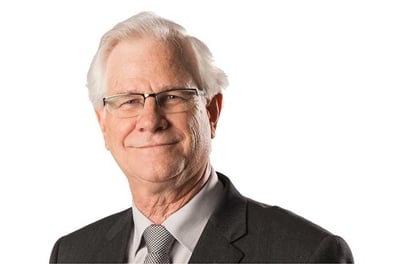Mind of Jacka: Hidden Facts
Blogs Mike Jacka, CIA, CPA, CPCU, CLU Jun 29, 2023

I am a geyser geek.
How much of a geyser geek? Well, I am the proofreader for the bimonthly newsletter for the Geyser Observation and Study Association (GOSA) which is called The Sput. (No, I’m not making that up.) I am also GOSA’s Treasurer and on the board of directors.
Daily, I visit the Old Faithful webcam, accessing the site where we gazers discuss what we are seeing on the camera. YNP - Geyser Dashboard (geysertimes.org) And I try to make the 14-hour drive from Phoenix to Yellowstone twice a year to spend at least 4 days sitting in front of steaming holes, waiting for something to erupt.
I just got back from one of those trips, and something interesting happened. In fact, I apparently caused a bit of a brouhaha.
My first day, I was walking the boardwalk on geyser hill when I noticed a small feature erupting between Sponge Geyser and Doublet Pool. (Feel free to research these references.) It stopped and I noticed another one erupting directly next to the boardwalk. Both were only erupting about two feet high, but the second was close enough to the boardwalk to spread debris.
I took a couple of pictures and posted them to the Geyser Discussion Board on Facebook. (There are many of us out there. This story only scratches the surface.) The next day, I saw that the pictures had been removed. Asking around, I found out that these were new outbreaks (occurring over the previous day or so) and some in the geyser gazer community were trying to keep news of the outbreaks quiet. Seems they felt that, if the National Park Service (NPS) became aware of the activity, that portion of the boardwalk might be closed. And then the gazers would not be able to watch the actions up close.
The day after I took the pictures, the NPS closed the boardwalk, and a number of people felt it was because of the pictures I posted. (As noted, a brouhaha.)
Even those with the best of intentions cannot help themselves. The geyser community is about observing, recording, and sharing information regarding geysers. (I’m paraphrasing the actual objectives from our articles of incorporation.) And yet, here was a group of these gazers trying to hide information because of self-interest. They felt that their ability to observe was more important than the potentially hazardous conditions that occur when hordes of tourists are walking on a boardwalk that might be compromised.
Don’t shake your heads. It happens all around us.
When we talk to people, we expect a certain amount of forthrightness. Of course, we know some people lie to the auditors. And we prepare for that eventuality. But, in that preparation, do we try to understand why some people feel the need to withhold information?
Most of us understand that, when we walk into a department, there is a certain amount of fear. And, from that, a hesitance to provide information, particularly negative information. But there can be more. Specifically, how many people hide information because they feel their interests or those of their department are more important than the interests of the internal auditor? How often is such action an example of misplaced altruism?
The best way to combat this is communication. Let people know what we are doing, let them know we are on the same team, and try to show that there is alignment in all our purposes. In that way, we might get them to open up.
But that doesn’t always work. I tried the whole “are the interests of the geyser community more important than the NPS’ interest in safety” spiel and, while it worked on some, others were incalcitrant. Lots of excuses; no good reasons.
It is a matter of doing our best to understand the people with whom we are working. And of being able to read the subtle signs — speech patterns, body language, etc. — that can tell us there is more to the story than we might be hearing.
And, while we’re at it, let’s shine that spotlight on our own activities. Have you ever kept quiet about something — something important — while talking to a client because you thought they might quit talking? Have you ever held up reporting something because you knew the blowback would include shutting the auditors out? Have you ever refrained from taking steps you knew you should take because you felt your self-interests were more important than the work you were supposed to be doing?
All of us — auditors and clients — fall into the trap of self-interest over the interests of others. Sometimes those self-interests are the correct ones to focus on. But, in other situations, it is our ego, fear, or misunderstanding that lead us in the wrong direction.
More and more, internal auditors are learning they have to know more than just numbers — that they have to know people. And nowhere is this more important than understanding why the truth is often so hard to find.


